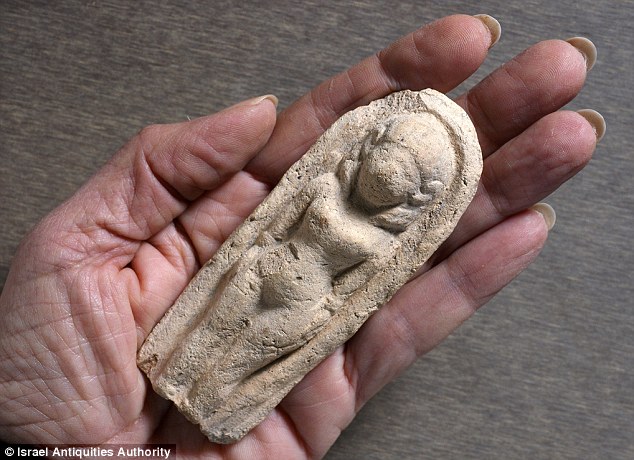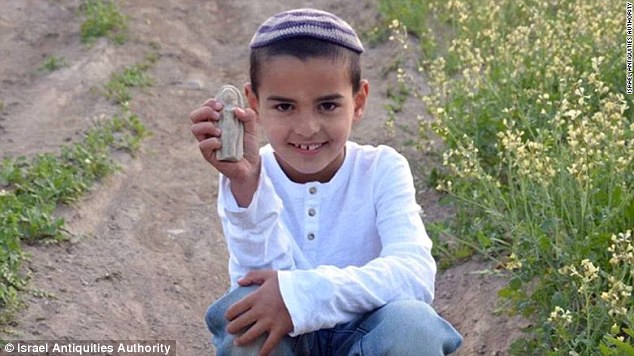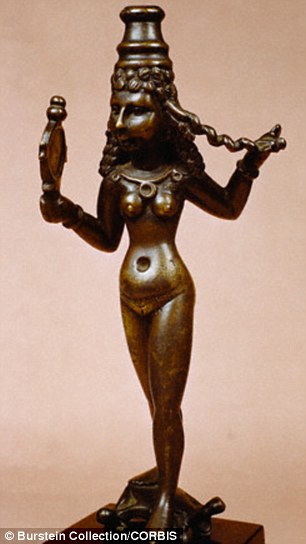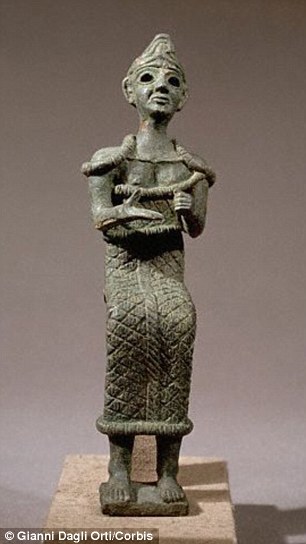DepthReading
Israeli boy, 7, accidentally unearths 3,400-year-old figurine of curvaceous goddess
The high point of many seven-year-olds' days out may include a play in the park, but for one Israeli child, it involved the discovery of a precious ancient artefact.
Ori Greenhunt spotted a figurine poking out of the earth when he was climbing a mound with friends at Tel Rehov archaeological site and carefully carried it home.
The small artefact is thought to be 3,400 years old and may be the image of the fertility goddess Astarte, or simply a curvaceous lady.
Ori came across a stone that had shifted and saw an image of a person covered with soil, according to the country's Antiquities Authority.
'Ori returned home with the impressive figurine and the excitement was great,' his mother Moriya Greenhut said.
'We explained to him this is an ancient artefact and that archaeological finds belong to the state,' she added.
The family, from the communal settlement of Tel Te'omin in the Beit Sheʽan Valley, gave the figurine to the Israel Antiquities Authority, which said the image of the woman was made by pressing soft clay into a mould.
THE GODDESS ASTARTE
The figurine may represent an ordinary women, or that of the fertility goddess Astarte.
Astarte was worshipped from the Bronze Age through classical antiquity and was connected with fertility, sexuality and war.
Her symbols were the lion, horse, sphinx, dove and a star within a circle indicating the planet Venus. She is usually depicted naked.
Astarte was worshipped in Syria and Canaan beginning in the first millennium BC.
She came from the same Semitic origins as the Mesopotamian goddess Ishtar.
Her worship spread to Cyprus where she was merged with another goddess, before her popularity was adopted by the ancient Greeks, eventually becoming Aphrodite.
Astarte arrived in Ancient Egypt during the 18th dynasty along with other deities.
'Some researchers think the figure depicted here is that of a real flesh and blood woman, and others view her as the fertility goddess Astarte, known from Canaanite sources and from the Bible.'
'It is highly likely that the term trafim mentioned in the Bible indeed refers to figurines of this kind.'
Astarte was worshiped from the Bronze Age through classical antiquity and was connected with fertility, sexuality and war.
Her symbols were the lion, horse, sphinx, dove and a star within a circle indicating the planet Venus. She is usually depicted naked.
He continued: 'Evidently the figurine belonged to one of the residents of the city of Rehov, which was then ruled by the central government of the Egyptian pharaohs.'
Dr Mazar said: 'The figurine 'is typical of the Canaanite culture of the 15th-13th centuries BC.'
Ori has been awarded a certificate of appreciation for his good citizenship by the Israel Antiquities Authority at his school.
His teacher, Esther Ledell, said: 'It was an amazing occasion.
'The archaeologists entered the class during a Torah lesson, just when we were learning about Rahel stealing her father's household gods.
'I explained that the household gods were statues that were used in idol worship, and all of a sudden I realise that these very same idols are here in the classroom!'
Category: English
DepthReading
Key words:





